#Japanese serenity artwork
Explore tagged Tumblr posts
Text

Whispers of Mount Fuji: A Traditional Japanese Serenity
"This captivating artwork draws inspiration from traditional Japanese aesthetics, featuring cherry blossoms cascading into a koi pond under a crimson sunset. With Mount Fuji majestically in the background and a serene torii gate by the water’s edge, the piece embodies harmony, nature, and cultural beauty."
#artists on tumblr#Japanese serenity artwork#Traditional Japanese landscape painting#Cherry blossoms Mount Fuji art#Torii gate Japanese illustration#Koi pond Japanese traditional art#Mount Fuji in Japanese culture#Lantern-lit Japanese art#Oriental art cherry blossoms#Calming Japanese nature scene
3 notes
·
View notes
Photo

🌸✨ Dive into tranquility with our latest creation, the Serene Forest Stream wallpaper! This stunning anime-style artwork captures the essence of peace and beauty, featuring a graceful geisha in traditional attire standing by a serene pond adorned with blooming water lilies. 🌷
Imagine yourself in this enchanting scene, surrounded by lush greenery and the gentle sounds of nature. It's perfect for anyone who loves anime and wants to bring a touch of calm to their digital space. Whether you're a fan of stunning visuals or just need a little serenity in your life, this wallpaper is sure to inspire!
Ready to transform your screen? 🌿✨ Don't miss out on this beautiful piece! You can embrace the tranquility by downloading the Serene Forest Stream wallpaper now!
Let us know what you think in the comments, and stay tuned for more amazing wallpapers coming your way! 💖
#anime#geisha#water lilies#pond#nature#tranquility#serene#forest#digital art#wallpaper#anime wallpaper#traditional attire#peaceful#blooming flowers#artwork#scenery#Japanese culture#anime style#beautiful#fantasy
9 notes
·
View notes
Text

Sailor moon
•
•
I went to the comic book store the other day and saw a sailor moon comic book??? I didn't know it existed?? I should've gotten it 😭 (no money)
•
•
#sailor moon#anime#art#fanart#artwork#cute#fandom#chibi#usagi#princess serenity#moon#sunday#anime fanart#magical girl#pink#red#sticker#sailor scouts#manga#shoujo#japanese#march#artist#artist on tumblr#small artist#fanartist#sailor moon fanart#traditional#traditional art#traditional drawing
3 notes
·
View notes
Text
Nature's Palette: Scenic Wall Art

"Immerse yourself in the breathtaking beauty of autumn with this vibrant artwork. A charming wooden bridge, surrounded by fiery red and golden leaves, leads to a serene retreat nestled in the hills. This piece captures the essence of fall's warmth and the tranquility of nature, perfect for enhancing any living space."

Buy it here
you can visite my store here
#Autumn Landscape Art#Scenic Nature Wall Art#Wooden Bridge Artwork#Vibrant Fall Colors#Serene Nature Scene#Japanese-Inspired Decor#Warm Autumn Vibes#Red Leaves Aesthetic#Cozy Seasonal Decor#Mountain Retreat Artwork#home & lifestyle#home decor#home design
2 notes
·
View notes
Text
Immerse yourself in serenity with this breathtaking artwork of a Japanese temple surrounded by blooming cherry blossoms and koi fish swimming in a reflective pond. The scene exudes peace and harmony, making it perfect for meditation spaces, home decor, or digital wallpapers.
Unlock Exclusive Art – Bring This Creation Home Today!
Love this artwork? 🎨 Take it beyond the screen! You can now own this exclusive piece from our Gumroad store. Whether you're looking to elevate your space, add a bold statement to your digital collection, or gift a unique print to a fellow art lover, this artwork is available for you to download instantly.
💛 Why Buy This Artwork?
High Resolution: Crystal-clear details perfect for wall art or digital wallpapers.
Unique Design: Only available through our Gumroad store—nowhere else!
Support Independent Art: Your purchase fuels more creativity and new artwork.
🔥 Act Now: Don’t miss out! Click the link to buy and download your exclusive print today. Our Gumroad Store: https://visualoom.gumroad.com/

0 notes
Text

Roaring and Serene. Japanese-inspired artwork. AI & Retouch.
#wallpaper#Japanese Art#Japanese Landscape#Nihonga#ai art#nft art#ai artist#nft artist#ai art commuity#nft art community#japan
111 notes
·
View notes
Text
Followers
Chapter 39
This is a Yandere Jujutsu Kaisen/JJK x Female Reader Fic!
MDNI!!!

Y/N slowly came to consciousness, her head throbbing and her body aching. She groaned as she wiped the drool from her lips, feeling a wave of nausea rise up. With great effort, she managed to roll off the traditional Japanese bed, her stomach rebelling as she vomited onto the wooden floor. The pain was significant but not as severe as the previous times she had endured similar situations.
As her dizziness subsided, she took a moment to look around. The room she was in had an air of timelessness about it. The decor was traditional, with elegant wooden architecture and a faint scent of sandalwood lingering in the air. The walls were adorned with intricate tapestries and delicate calligraphy, giving the room a refined and classic feel.
Y/N struggled to her feet, feeling the ground beneath her as she cautiously began to explore. Her first observation was that the house appeared to be very old, perhaps even historical. The wooden floor creaked softly under her steps, and she noticed that the furnishings were carefully maintained but seemed aged.
As she ventured out of the room, she found herself in a spacious corridor that extended in both directions. The wooden walls were lined with framed artworks and traditional Japanese artifacts. The faint sound of chatter and movement reached her ears, guiding her toward the source of the activity.
The corridor opened up into a large central hall, where she was greeted by a bustling scene. People in traditional attire—servants and residents alike—moved about with purpose, their conversations a murmur of soft voices. The atmosphere was surprisingly lively, a stark contrast to the quiet solitude of her previous surroundings.
Y/N moved carefully through the hall, her eyes scanning the surroundings. The mansion's design was unmistakably traditional, with elegant wooden beams and sliding paper doors. The floors were covered in tatami mats, and the space exuded a sense of serenity despite the activity.
As she continued her exploration, she noticed the garden outside. The mansion's wooden veranda, slightly elevated from the ground, offered a beautiful view of the well-maintained Zen garden. The white gravel crunched softly underfoot, and Y/N admired the serene arrangement of the garden. The space was dotted with wisteria trees, bonsai trees, and stone lanterns. A pond with large Ishi stones added to the tranquil ambiance, the water shimmering softly in the sunlight.
The entire estate was surrounded by an engawa, a traditional wooden fence that provided both security and a sense of enclosure. The setting was peaceful and picturesque, contrasting sharply with the chaos and fear that had marked her recent experiences.
Y/N was still feeling disoriented and unsettled by her surroundings. The elegance of the estate and the presence of the servants indicated that she was in a place of significance, yet she had no idea how she had arrived there or why she had been brought to such a secluded location.
As she stood on the veranda, taking in the calming view of the garden, she felt a sense of being both trapped and strangely safe. Her thoughts turned to the people who might have brought her here. She wondered if this place was somehow connected to her past or to the individuals who had been involved in her recent struggles.
Her mind raced with questions as she continued to explore the mansion, trying to piece together the puzzle of her new surroundings. The mansion's historical charm and serene beauty were undeniable, but the circumstances of her arrival and her future were still shrouded in uncertainty.
༺♥༻❀༺♥༻༺♥༻❀༺♥༻༺♥༻❀༺♥༻༺♥❀༺♥༺♥༻
Y/N was in the midst of exploring the mansion when a young man with long, blond hair approached her. His presence was commanding, yet there was a sense of familiarity in his demeanor. He greeted her with a respectful bow.
“Oyakata-sama,” he said, his voice calm and steady. “I wanted to inform you that Kenjaku will be arriving soon for a visit.”
Y/N's eyes widened slightly at the address, recognizing the title but struggling to make sense of it. She nodded, keeping her expression neutral as she processed the information.
“Thank you,” she replied softly.
Tengen gave a polite nod in return, not offering further introductions or explanations. His focus was solely on delivering the message.
“If you require anything in the meantime, please let me know,” he added before turning to leave.
As Tengen walked away, Y/N was left alone with her thoughts. The familiarity of the mansion and the title "Oyakata-sama" suggested a deep connection to this place, yet her mind was racing to grasp the full scope of her situation. The fact that Kenjaku was coming to visit added another layer of complexity.
Y/N remained still for a moment, absorbing the quiet surroundings of the mansion and the significance of Tengen’s words. She was determined to maintain her composure and gather more information about her role and the visitors she was expecting, all while concealing her confusion about the nature of her current situation.
༺♥༻❀༺♥༻༺♥༻❀༺♥༻༺♥༻❀༺♥༻༺♥❀༺♥༺♥༻
In the quiet, elegantly furnished sitting room, Y/N sat in a traditional black kimono, her posture poised but her mind racing with uncertainty. The room was adorned with subtle yet refined decorations, and the soft glow of paper lanterns created a serene atmosphere. The wooden floor beneath her was polished to a high sheen, and the sliding doors allowed a view of the meticulously kept garden outside.
Across from her, Kenjaku sat with an air of casual confidence. His dark hair framed his face, and the stitches and scars around his head marked his vessel’s unique appearance. His calm demeanor was in stark contrast to the whirlwind of emotions Y/N felt. His eyes, though relaxed, held a calculating gleam as he observed her.
“I’m pleased to finally have this opportunity to speak with you, Oyakata-sama,” Kenjaku said, his voice smooth and charming. He leaned forward slightly, his gaze fixed on Y/N with a mix of interest and something more predatory.
Y/N met his gaze, trying to maintain her composure despite the unease she felt. “What is it you wish to discuss?”
Kenjaku's smile widened, revealing a hint of his true nature beneath his seemingly affable exterior. “I’ve been very eager to speak with you about a few matters of mutual interest. You see, I have long admired your... unique abilities and the techniques you possess. They are quite valuable.”
He paused, letting the weight of his words settle before continuing. “It’s not often that someone with such extraordinary talents comes into my orbit. I believe it would be most beneficial for both of us if you were to join me. Your skills and techniques could greatly further my own ambitions.”
Y/N’s heart raced at the implications of his words. She had heard of Kenjaku’s reputation—his manipulative and egotistical nature was well-known. She could sense that this conversation was more than just a casual chat. Kenjaku was making an offer that had strings attached, and she had to tread carefully.
Kenjaku continued, his tone now taking on a more personal note. “I understand that joining me might seem daunting. However, consider the advantages. You would be in a position of great influence and power, and I assure you that I have the means to protect and elevate you beyond what you might currently experience.”
His eyes twinkled with a mix of charm and calculation. “Of course, this partnership would be formalized in the most traditional way. We would have to discuss matters of marriage. It’s an arrangement that has worked well for me in the past and could be quite advantageous for you as well.”
Y/N’s mind reeled at the mention of marriage. The proposal was both an offer and a command, one that sought to entwine her fate with Kenjaku’s ambitions. Her thoughts raced as she tried to assess her options, knowing that any response she gave would need to be carefully considered.
Kenjaku’s demeanor remained affable, but there was a cold undertone to his words. “Think about it, Oyakata-sama. You have the chance to be part of something greater, to harness your potential fully. I am offering you an opportunity that few could refuse.”
Y/N took a deep breath, her mind struggling to piece together a response that would allow her to maintain some semblance of control while navigating the situation. She was fully aware of Kenjaku’s manipulative nature and the potential consequences of rejecting or accepting his proposal.
“I need time to consider your offer,” Y/N said finally, trying to sound both respectful and noncommittal. “This is a significant decision, and I must weigh the implications carefully.”
Kenjaku’s smile remained, but there was a flicker of impatience in his eyes. “Of course. Take all the time you need. Just know that the offer stands, and I am confident you will see the benefits of joining me.”
He stood, signaling the end of their conversation. “I look forward to your decision, Oyakata-sama. I trust you will make the choice that is best for your future.”
As Kenjaku left the room, Y/N was left alone with her thoughts. The weight of his proposal hung heavy, and she knew that whatever choice she made would have far-reaching consequences.
༺♥༻❀༺♥༻༺♥༻❀༺♥༻༺♥༻❀༺♥༻༺♥❀༺♥༺♥༻
As the door closed behind Kenjaku, Y/N was left alone in the sitting room. Her heart pounded in her chest, and her mind spun with confusion and fear. She sat down heavily on the tatami mat, staring blankly at the elegant decor of the room, her thoughts racing.
“What the hell is going on?” she muttered to herself, her voice trembling with a mix of frustration and dread. The gravity of Kenjaku’s proposal and his manipulative nature weighed heavily on her. The idea of marriage and being entangled in his ambitions felt like a nightmare she couldn’t wake up from.
Y/N ran her hands through her hair, her mind a whirlwind of chaotic thoughts. She was struggling to process the situation and to make sense of her reality. The notion of being caught in a cycle of repeated experiences, being born and reborn, was unsettling.
She thought about her past experiences, the times she had seemingly died and then found herself in different situations or places. The idea that she might be trapped in a cycle of rebirth or continual existence gnawed at her.
“If I’ve died before and been reborn… would that happen if I killed myself?” she pondered aloud. The thought was both morbid and intriguing. If death was not an end but a transition, what would happen if she took her own life? Would she simply wake up somewhere else, in another time or place?
The possibility was unsettling yet strangely liberating. If her existence was confined to a cycle of rebirth, then perhaps death was not a true escape. Maybe it was just a change in her circumstances, a shift to another version of herself in another place.
Y/N’s hands trembled as she thought about the potential consequences of taking such drastic action. She wondered if she could break free from the cycle by ending her life, or if it would only result in more of the same—a new beginning in a different setting but with similar challenges.
She felt a surge of desperation as she grappled with her thoughts. The idea of being reborn into another life, potentially facing similar or even worse situations, filled her with dread. The thought of being forever trapped in a cycle of existence, manipulated and controlled, was almost too much to bear.
Despite her fear, Y/N knew she had to make a decision. She needed to find a way to regain control of her life and break free from the manipulation of figures like Kenjaku. The thought of seeking a new path or escape, even if it meant confronting the unknown, was a powerful motivator.
With a deep breath, Y/N stood up and began to pace the room. She needed to clear her mind and come up with a plan—one that would allow her to navigate her current situation and find a way to protect herself. The idea of simply ending it all was tempting, but she had to consider the unknown consequences and find a way to assert her agency within the constraints of her reality.
As she paced, her thoughts became clearer. She resolved to take control of her circumstances, to seek out options and allies that might help her regain her freedom. The path ahead was uncertain and fraught with danger, but Y/N was determined not to succumb to despair. She would face whatever challenges lay ahead with resolve, hoping to find a way to break free from the cycle and reclaim her life.
༺♥༻❀༺♥༻༺♥༻❀༺♥༻༺♥༻❀༺♥༻༺♥❀༺♥༺♥༻
Y/N paced the elegant sitting room, her mind racing with the implications of Kenjaku’s offer and the possibilities of her next steps. She needed to discuss her options and formulate a plan. Deciding that Tengen might be the key to enacting her strategy, she approached one of the servants passing by.
“Please, could you bring Tengen to me?” she requested, her tone steady despite the storm of emotions inside her.
The servant nodded respectfully and hurried off to fetch Tengen. As she waited, Y/N’s thoughts turned to the conversation she planned to have with him. She needed a way to protect herself and possibly escape the grasp of Kenjaku.
When Tengen arrived, he greeted her with his usual calm demeanor. “Oyakata-sama, you requested to see me?”
Y/N gestured for him to sit. “Yes, Tengen. I need to discuss something with you regarding Kenjaku’s offer.”
Tengen took a seat, his expression attentive. “I’m listening.”
Y/N took a deep breath. “Kenjaku has made me an offer to join him, and it involves marriage. He’s seeking to use my abilities for his own purposes. I’m considering the possibility of… ending my life to escape this situation. I want to know if you can arrange for me to have poison in my drink tonight during dinner.”
Tengen’s eyebrows raised slightly, though he remained composed. “You wish to end your life, Oyakata-sama? Is there no other way you’d prefer to resolve this situation?”
Y/N nodded, her expression serious. “For now, it seems like the most viable option. But I also want to discuss another matter with you. I’ve heard about a plan to destroy the estate. Can you elaborate on that?”
Tengen’s gaze grew thoughtful. “The plan involves a massive explosion that would obliterate the entire mansion and the surrounding area. It’s designed to destroy the estate completely, including everyone inside, as well as momentarily injure Kenjaku. It would be a drastic measure, but it’s effective if executed properly.”
Y/N tilted her head slightly, intrigued and concerned. “And how would this plan be carried out?”
Tengen explained with a calm, methodical tone. “The estate has been rigged with explosives. At the right moment, these explosives would be triggered, causing a massive detonation that would destroy everything on the mountainside. This would ensure that no one could escape, and it would deal a significant blow to any of our enemies, including Kenjaku.”
Y/N absorbed the information, weighing her options. The plan to destroy the estate was both destructive and decisive, aligning with her desire to escape Kenjaku’s control. She saw the potential for this plan to be a means of ensuring her freedom and safety.
“Thank you for the explanation,” Y/N said finally. “In that case, I would like to proceed with the plan. Please make the arrangements for me to have poison in my drink tonight, and ensure that the explosives are set for detonation.”
Tengen nodded solemnly. “I understand, Oyakata-sama. I will make the necessary arrangements. However, I believe you should know about your brother, Yu. He has been searching for you, and his optimistic nature could prove beneficial in this situation.”
Y/N’s heart raced at the mention of a brother she didn’t know existed. “Yu? What do you mean?”
Tengen continued, “He’s a young jujutsu sorcerer, cheerful and eager to prove himself. His unwavering spirit could be an asset if he were to find you. But for now, our focus must remain on your safety.”
Y/N felt a mix of emotions—curiosity about her brother and the urgency of her current predicament. “Thank you for the information. We’ll discuss my brother later. Right now, we need to set this plan in motion.”
As Tengen left to carry out her instructions, Y/N felt a mix of relief and apprehension. The plan was set into motion, and she hoped it would provide the means to escape Kenjaku’s grasp and the oppressive environment of the estate.
In the quiet moments before dinner, Y/N prepared herself mentally for the night ahead. The thought of the explosion and the destruction it would bring gave her a sense of finality, a way to end her current nightmare and potentially start anew.
Dinner was to be a pivotal moment. With the poison in her drink and the explosives primed for detonation, Y/N hoped that this drastic action would ensure her freedom and bring a conclusion to the dangerous situation she found herself in.
༺♥༻❀༺♥༻༺♥༻❀༺♥༻༺♥༻❀༺♥༻༺♥❀༺♥༺♥༻
Y/N wandered through the serene gardens surrounding the Ubuyashiki Estate. The midday sun cast a gentle light over the white gravel paths and the lush greenery, creating a calming atmosphere that belied the turmoil she felt inside. The wisteria trees and bonsai plants added an air of tranquility, but her mind was anything but at peace.
As she walked, lost in her thoughts, she nearly collided with Kenjaku, who was strolling along the same path. He looked up with a smile that was both charming and unsettling.
“Ah, Oyakata-sama,” Kenjaku greeted, his voice smooth and almost too pleasant. “It’s good to see you out and about. I trust you’re enjoying the garden?”
Y/N forced a smile, trying to mask her unease. “Yes, it’s lovely. Thank you.”
Kenjaku’s gaze lingered on her, his expression growing more intense. “You know, I’ve been thinking about our previous encounters. Your technique... it had quite an effect on me. I remember how you used it before, and I couldn’t wait for you to use it again. It’s truly remarkable.”
He paused, his eyes narrowing slightly with an unsettling mixture of anticipation and affection. “And I must say, I’m looking forward to our future together. I can’t wait for us to be married. It will be a union of great significance.”
Y/N’s heart pounded as she listened to his words. She couldn’t reveal that she had no recollection of their past interactions or the extent of her abilities. Instead, she nodded, trying to maintain her composure.
“Of course,” she replied, her voice steady. “I look forward to it as well.”
Kenjaku smiled, a hint of satisfaction in his eyes. “I’m glad to hear that. I’ll see you at dinner tonight.”
With that, Kenjaku took his leave, his footsteps fading as he walked away. Y/N watched him go, her mind racing. The encounter had stirred a new wave of confusion and fear within her.
Once Kenjaku was out of sight, Y/N collapsed onto a nearby bench, her façade of calm crumbling. She let out a harsh laugh, the sound echoing in the otherwise quiet garden. It was a laugh tinged with bitterness and desperation.
“So that’s it,” she muttered to herself, her voice trembling. “He’s just like Gojo. He wants everything from me. He would do anything to have me, even if it means killing everyone else.”
The realization hit her hard. Her technique, whatever it was, must have had a profound effect on Kenjaku, similar to the way Gojo had become obsessed with her. It was a terrifying thought—that her own abilities had led to this kind of fixation, a destructive desire that put her in constant danger.
Y/N buried her face in her hands, her emotions spilling over as she sobbed quietly. The weight of her situation was overwhelming. The cycle of manipulation and obsession seemed to follow her wherever she went, and the prospect of being trapped in a cycle of control and destruction was nearly unbearable.
She was beginning to understand the full scope of her predicament. Her technique had likely caused a similar reaction in Kenjaku as it had in Gojo, creating a dangerous and obsessive bond that drove them to extreme lengths. The thought that her abilities could inspire such destructive obsession was both horrifying and isolating.
As her sobs subsided, Y/N took a deep, shuddering breath. She knew she had to stay focused and stick to her plan. The explosion was meant to be a way out, a means to escape from this cycle of obsession and manipulation. It was a drastic measure, but it seemed to be the only option left for her to regain her freedom.
With renewed determination, Y/N stood up from the bench, brushing away her tears. She needed to prepare for the evening ahead, to ensure that everything went according to plan. The prospect of ending her current nightmare and escaping the clutches of figures like Kenjaku and Gojo was both daunting and hopeful.
She walked back toward the mansion, her mind steeled for the actions she would need to take. The garden, once a symbol of peace, now served as a reminder of the challenges she faced and the lengths she would go to in order to protect herself and secure her freedom.
༺♥༻❀༺♥༻༺♥༻❀༺♥༻༺♥༻❀༺♥༻༺♥❀༺♥༺♥༻
As the afternoon wore on, the servants of the Ubuyashiki Estate busied themselves with the final preparations for the evening’s dinner. They scurried around the mansion, ensuring that every detail was attended to, from the meticulous arrangement of the dining table to the careful placement of decorative elements. The estate was a hive of activity, a contrast to the turbulent emotions swirling within Y/N.
Y/N observed the bustling activity from a distance, her thoughts heavy with the weight of her impending plans. The servants moved with practiced efficiency, their tasks a reminder of the fleeting normalcy that would soon be shattered.
With the final touches in place, the servants began to retire, leaving the estate. The sound of their footsteps gradually faded, leaving only Y/N and Kenjaku within the grand mansion. The quiet of the estate seemed to amplify her sense of isolation, underscoring the gravity of the situation.
Y/N paced the halls, her mind consumed with the finality of the plan she had set in motion. The poison would be administered, the explosives primed. The mansion would soon be reduced to rubble, and she would hope to escape the deadly grasp of Kenjaku and the oppressive environment of the estate.
As the last of the servants departed, Y/N found herself alone in the mansion, the silence almost oppressive. The grandeur of the estate, with its elegant wooden architecture and serene gardens, now felt like a cage, a gilded prison from which she was desperate to escape.
The evening approached, and Y/N prepared herself for the dinner. Her traditional black kimono, carefully chosen for the occasion, was both elegant and symbolic—a final display of composure before the chaos that would follow. She took a moment to adjust the intricate folds of the garment, her hands moving with practiced precision, though her mind was far from calm.
Kenjaku arrived just as the sun began to set, casting long shadows across the room. His presence was commanding and confident as he entered the dining area, his eyes scanning the room with a mix of satisfaction and anticipation. He had been eagerly awaiting this evening, and his demeanor reflected his eagerness.
“Ah, Oyakata-sama,” Kenjaku greeted with a smile that carried both warmth and menace. “It seems everything is ready for our dinner.”
Y/N met his gaze with a mixture of resolve and apprehension. “Yes, Kenjaku. Everything is prepared.”
Kenjaku took his seat at the head of the table, his posture relaxed but his eyes sharp. “I must say, you look absolutely radiant this evening. It’s a shame we’ll have to endure such a tumultuous night.”
Y/N took her seat across from him, her movements deliberate and controlled. She tried to maintain her composure, but the weight of the plan and the reality of the situation were heavy on her shoulders.
As the dinner progressed, Y/N kept a close watch on the proceedings, her heart pounding with each passing moment. The conversation flowed between them, Kenjaku’s demeanor charming and engaging, though his words carried an undercurrent of possessiveness and control.
Finally, the time came for the poison to be administered. As Y/N sipped her drink, she felt a cold knot of fear in her stomach, knowing that this was part of her plan to escape. She tried to remain calm, though her mind was a whirlwind of thoughts and emotions.
Kenjaku, unaware of the true nature of the drink, continued to speak with his usual charm. His eyes gleamed with satisfaction as he talked about their future and the plans he had in store. He was entirely absorbed in his vision of their future together, oblivious to the imminent destruction that Y/N had set into motion.
As the evening wore on, Y/N’s thoughts turned to the final stages of her plan. The mansion would soon be engulfed in a massive explosion, obliterating the estate and everything within it. The realization of what was about to happen filled her with a sense of grim satisfaction, though she could not shake the underlying anxiety about the uncertainty of her future.
With the last course served and the final sips of her poisoned drink taken, Y/N prepared herself for the moment of action. The explosives were set, and the countdown to destruction had begun. All that remained was to wait for the right moment and to ensure that her plan came to fruition.
As the night drew to a close, Y/N and Kenjaku were alone in the dining room, the atmosphere charged with a tense anticipation. The estate was quiet, save for the distant sounds of the night, as the final stages of Y/N’s plan moved forward.
Y/N’s heart raced as she mentally prepared for the chaos that would soon erupt, knowing that the end of her current nightmare was just moments away.
༺♥༻❀༺♥༻༺♥༻❀༺♥༻༺♥༻❀༺♥༻༺♥❀༺♥༺♥༻
As the last of the servants finished their duties and exited the estate, Y/N was left alone in the grand hallway of the mansion. The preparations for her departure were complete, and the atmosphere was charged with a tense anticipation.
Y/N stood in the hallway, dressed in her traditional black kimono. The servants had done their best to ensure she looked impeccable, and now only Kenjaku remained as her companion. The mansion was quiet, the only sounds being the distant rustling of the garden leaves and the faint echoes of footsteps that had long since faded.
She took a moment to collect her thoughts, her mind still swirling with the weight of her decision and the plan she had put into motion. The estate was eerily silent, the calm before the storm.
As she awaited Kenjaku, the heavy silence was suddenly broken by the sound of approaching footsteps. Kenjaku appeared, his presence commanding and confident. His eyes swept over Y/N with a look of satisfaction and a hint of something darker beneath the surface.
“Ah, Oyakata-sama,” Kenjaku said smoothly, his voice carrying an undertone of anticipation. “It’s time for dinner. I trust you’re ready?”
Y/N nodded, her heart racing as she prepared to follow him. Kenjaku extended a hand toward her, a gesture that was both courteous and possessive.
“Shall we?” he asked, his smile hinting at his eagerness to be with her.
As she took his arm and walked beside him, Y/N's thoughts were focused on the plan set into motion. The impending dinner would mark a crucial point in her efforts to escape Kenjaku’s clutches and bring an end to the current cycle of manipulation.
9 notes
·
View notes
Text
Cute Japanese-Style Cat Illustration
Embrace the charm of this adorable cat illustrated in a traditional Japanese style. With delicate brush strokes and a serene expression, this artwork captures the essence of kawaii culture, blending it with the elegance of Japanese art. Perfect for fans of both cats and Japanese aesthetics who appreciate the subtle beauty of this harmonious fusion. 🐱🇯🇵

#illusration#illustration#ilustraciondigital#funny#funny memes#funny post#funny image#funny animals#funny cats#so cute#cute#cute animals#cute cats#animals lovers#animals funny#animal lover#animals#cats#cats of tumblr#cat#cat of tumblr#warrior cats#cat lovers#cat funny#cat memes#my cat#cats lover#cats funny#my cats#cats memes
23 notes
·
View notes
Text
Asteroid Makoto Shinkai (55222) in your astrology natal chart
By : Brielledoesastrology (tumblr)
“Have we...met before, somewhere else?"

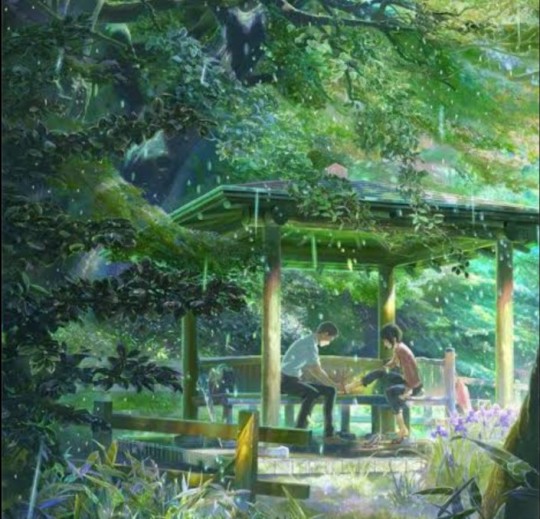
asteroid "Makoto Shinkai" code number : 55222
.
Makoto Shinkai is a renowned Japanese filmmaker known for his work in the field of anime and animated films.
.
He gained international recognition for his visually stunning and emotionally resonant films that often explore themes of love, distance, and human connections.
.
Shinkai is often praised for his attention to detail, beautifully rendered backgrounds, and ability to evoke a sense of melancholy in his storytelling.
.
One of Shinkai's most famous works is the film "Your Name" (Kimi no Na wa), released in 2016. It became a massive commercial success both in Japan and worldwide, earning critical acclaim for its stunning animation, compelling story, and emotional depth. The film follows the story of two teenagers who mysteriously swap bodies and eventually develop a connection that transcends time and space.
.
Some of Shinkai's other notable works include "5 Centimeters per Second" (2007), which portrays a tale of long-distance love and the passage of time, and "Weathering with You" (2019), a film about a boy who encounters a girl with the ability to control the weather.
.
Shinkai's films often incorporate elements of fantasy and science fiction while exploring human relationships and the impact of time and distance on personal connections.
.
Makoto Shinkai's distinct visual style and ability to tell deeply emotional stories have made him a prominent figure in the anime industry, and he is widely regarded as one of the most talented and influential anime directors of his generation.
.
Makoto Shinkai's art style is characterized by its breathtaking visuals, attention to detail, and emphasis on capturing the beauty of natural landscapes.
.
His films often feature meticulously drawn and painted backgrounds that showcase realistic and stunning scenery, ranging from sprawling cityscapes to serene rural landscapes. Shinkai pays great attention to atmospheric effects, such as light, shadow, and weather, which contribute to the overall mood and tone of his works.
.
Shinkai's style tends to be more grounded and less exaggerated compared to some other anime styles. His characters often have a realistic appearance, with subtle facial expressions that convey complex emotions.
.
Shinkai focuses on capturing the nuances of human emotions, particularly the feelings of longing, yearning, and the bittersweet nature of love and relationships.
.
Color plays an essential role in Shinkai's art style. He often employs vibrant and vivid colors to create visually striking scenes, especially during key emotional moments.
.
The use of contrasting colors and lighting techniques helps to evoke a sense of atmosphere and depth in his compositions.
.
Shinkai's art style combines technical excellence with an ability to convey powerful emotions through visuals. His attention to detail, stunning backgrounds, and skillful use of color contribute to the distinctive and visually captivating nature of his films.
(source : chat gpt)
.
In astrology the asteroid "Makoto shinkai" (55222) could represent : where you have great talent in your art works or story telling, where your art work or story telling have emotional depth, where your artwork or story has really amazing visual beauty, where your art work or story telling have reflection on transience, where your art work or story telling is very inspirational, where your art work or story telling is greatly admired or loved by a lot of people, where you prefer to make your art works or story telling more to the realistic side
.
⚠️ Warning : i consider this asteroid as prominent and brings the most effect if it conjuncts ur personal planets (sun,moon,venus,mercury,mars) and if it conjuncts ur personal points (ac,dc,ic,mc), i use 0 - 2.5 orbs (for conjunctions). For sextile, trine, opposite and square aspects to asteroids i usually use 0 - 2 orbs. Yes tight conjunctions of planet / personal points to asteroids tends to give the most effect, but other aspects (sextile,trine,square,opposite, etc) still exist, even they produce effects. If it doesn't aspect any of your planets or personal points, check the house placement of the asteroid, maybe some stuff/topics relating to this asteroid could affect some topics/stuff relating to the house placement . ⚠️
#astrology#astro observations#astro notes#astrology observations#astro community#astrology notes#zodiac#astroblr#gemini#aquarius#tarotblr#witchblr#astrology tips#astrology blogs#astrology community#brielledoesastrology#astrology asteroids#asteroids astrology observation#asteroids astrology#asteroids in astrology#fame in astrology#makoto shinkai#asteroid makoto shinkai#garden of words#fame asteroids#your name#suzume#anime#anime astrology
146 notes
·
View notes
Text
Tiān Guān Cì Fú Hanakotoba Analysis Part 1

◤━━━━━━━━━◥✿◤━━━━━━━━━◥
-> 1) Peach Blossom/Plum Blossom/Cherry Blossom

While the flowering trees featured in the donghua as well as in its opening credits, official artwork and ending credits could be plum blossoms (Prunus mume) or cherry blossoms (Prunus serrulata), they are most likely to be peach blossoms (Prunus persica). Despite the fact that they can be difficult to differentiate between at times, especially when referencing a drawing, these three blossoms do have a few distinguishing features, which are as follows. Peach blossoms have pointed petals, plum blossoms have rounded petals, and cherry blossoms have a notch at the tip of their petals. Peach blossoms produce two flowers from a single node, whilst plum blossoms produce one flower per node and cherry blossoms produce several flowers per node. Finally, while plum and cherry blossoms develop leaves after their blossoms fall, while peach blossoms seem to produce leaves concurrently with flowering. Despite these distinctions, these flowers are frequently confused with one another, resulting in a significant overlap in their symbolic meanings throughout different cultures; thus, my decision to feature them all here.
1.1) Peach Blossom

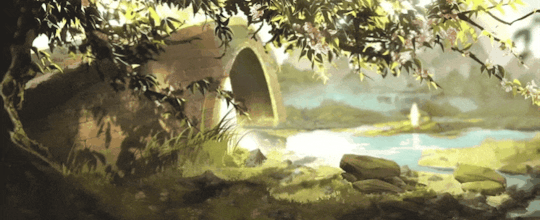
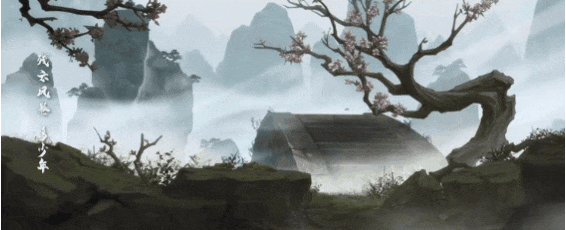
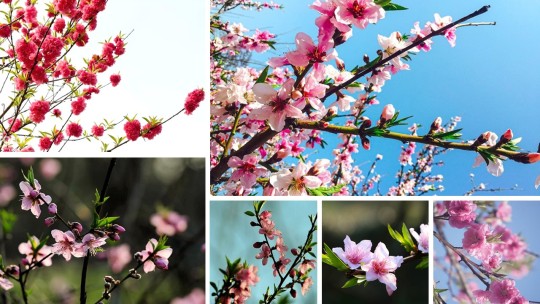
Peach blossoms are known as táohuā (桃花) in Chinese. They symbolise immortality, vitality, longevity, peace, good luck, success and prosperity in Chinese culture. Furthermore, peach tree wood was believed to protect humans from evil spirits, therefore branches were hung above doorways to drive demons away, and peach wood wands were used in exorcisms. Furthermore, its Chinese name “táohuā” has the figurative meaning of “luck in love affairs; luck in love”. Peaches are also known as senki or senka in China (meaning tree or fruit that gives power to the gods), and it has been believed since ancient times that peaches have the divine power to grant people perpetual ageing and longevity. Peach blossoms are known as momo (桃) in Japanese. Its meanings in hanakotoba are “I am your captivator”, “invincible under heaven” and good-natured. Its symbolic meaning of "invincible under heaven" stems from the fact that peach has traditionally been used to fend off evil spirits and as a spiritual medicine for immortality. In Western floriography, peach blossoms symbolize longevity, gentleness, honour, peace, happiness and generosity. The peach blossom also has the meanings "I am your captive" and "your charms are unrivalled qualities." The peach blossom has been used as a symbol of renewal and growth in Western literature.Xie Lian’s infamous quote “Body in the abyss, heart in paradise” (MXTX, p. 6) is translated from the original “Shēn zài wú jiàn, xīn zài táo yuan” (身在无间, 心在桃源)—which can be roughly translated as “Body in Wujian, heart in Taoyuan”. The word "paradise" in his quote actually corresponds with the Chinese phrase "táo yuan" (桃源)—which is short for táohuāyuán (桃花源)—which means "peach blossom valley," and is a saying for paradise/heaven. The phrase is taken from the title of Tao Yuanming's 421 CE fable, which details a chance discovery of an ethereal paradise where its inhabitants live an ideal existence in harmony with nature for centuries, remaining oblivious of the outside world. This phrase can also refer to an idealistic place of serenity and rest, but it is also used to refer to an unrealistic fantasy. Additionally, the peach blossom’s symbolic meanings of immortality, longevity, good luck, generosity, honour, good-natured, prosperity and “invincibility under heaven” as well as its association with gods and divine power suit the attributes of the heavenly realm—which is where they are primarily seen in the series—as well as the values its officials are meant to aspire to. The tree’s symbolic meanings of “your charms are unrivalled qualities”, “luck in love”, renewal and growth greatly complement Xie Lian and Hua Cheng’s relationship. Despite having his luck sealed away and being catastrophically unlucky from then on, Xie Lian was extremely fortunate in discovering profound and enduring love. Furthermore, Xie Lian's immense generosity and compassion for people, albeit an unattainable ideal for many, was part of what drew Hua Cheng to him: "If your dream is to save the common people, then my dream, is only you" (MXTX, p. 1953). This corresponds to the peach blossom's association with dignity, serenity, charity, and "unrivalled charms". The scene in the second season's ending theme visuals during which a peach tree branch is shown enduring weather conditions throughout all four seasons is a representation of Hua Cheng's patience and dedication while searching for Xie Lian during the 800 years between the latter's second banishment and third ascension. It also parallels Xie Lian's patience and fidelity while waiting for Hua Cheng's return after the final battle.
1.2) Plum Blossom


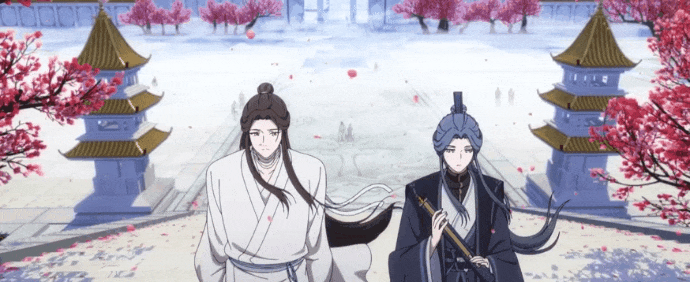
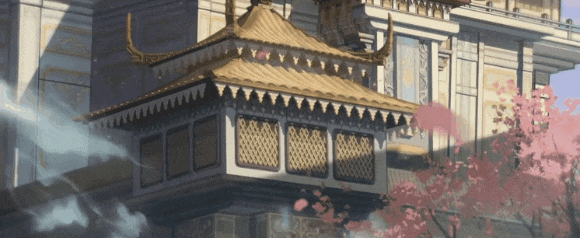
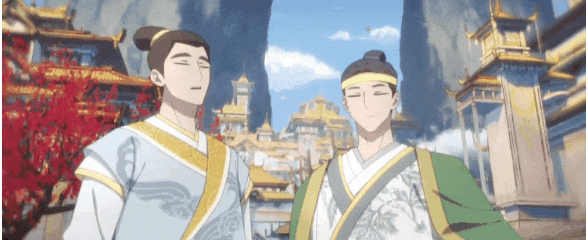
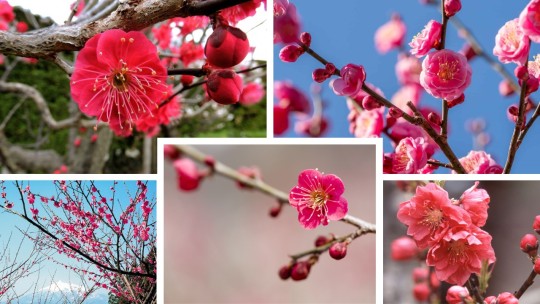
Plum blossoms are known as méihuā (梅花) in Chinese. They hold the symbolic meanings of endurance, perseverance, vitality, inner strength, hope and thriving through adversity in Chinese culture because they are one of the hardiest flower species in the world and blossom during winter defying all the vagaries of winter weather. When their blossoms valiantly emerge during the latter weeks of winter, they are seen as a hopeful omen of spring and are treasured for their splendour during the darkest time of year. Plum blossoms thus herald the arrival of spring and signal the end of winter. Plum blossoms are also China's national flower, serving as a national symbol. Plum blossoms are associated with longevity because their blossoms remain in flower for a month. Plum blossoms can also represent those with a strong personality who are unafraid of difficulties. In Japan, plum blossoms are known as ume (梅). Its meanings in hanakotoba include integrity, patience, elegance, loyalty and faithfulness. In Western floriography, plum blossoms symbolise keeping promises, fidelity, beauty and longevity. Plum blossoms are also associated with the end of winter and represent hope, tenacity, perseverance, courage, and beauty's capacity to overcome adversity. Furthermore, plum blossoms represent prosperity, fruitfulness, beauty, purity, and good fortune. Wild plum blossoms in particular represent independence. The intricate dynamics of Hua Cheng and Xie Lian's relationship are complemented by the symbolic meanings of hope and the onset of spring evoked by plum blossoms. After 800 years of roaming alone, Xie Lian meets Hua Cheng. Bringing a sense of fulfilment, excitement, and happiness to his life that he hadn’t felt in a long time; as he told Hua Cheng, "Only after meeting you, did I rediscover that it's such a simple thing to be happy" (MXTX, p. 1060). Plum blossoms can also represent individuals who possess strong personalities and are not intimidated by challenges, which complements Xie Lian's character well. Despite being subjected to tremendous adversity, he continues to be as unyielding and resilient as he was before his first banishment, remarking, "I might not be able to decide whether the road is easy or not, but whether I walk it is entirely up to me" (MXTX, p. 1125). The plum blossom’s symbolic meanings of integrity, patience, fidelity, perseverance, courage, beauty, independence and elegance also complement Xie Lian’s character. The plum blossom’s symbolic meaning of keeping promises greatly aligns with Hua Cheng’s character, especially when referencing his declaration to Xie Lian near the end of the novel, "There is no banquet in this world that does not come to an end...but I will never leave you. I will come back...Your Highness, believe me" (MXTX, p. 1954). True to his promise, he defies death once more to return to Xie Lian after replenishing his spiritual power for an indeterminable amount of time. Hua Cheng’s unwavering devotion to Xie Lian is a core part of his character which also ties into the plum blossom’s meanings of fidelity, loyalty and faithfulness. Hua Cheng’s favourite poem referenced in the novel—Ache of Separation by the Tang poet Yuan Zhen—is a reference to his immense devotion. The poem states “After seeing the vast sea, no water can compare; Scattered from the peak of Mount Wu, there are no other clouds… Many times I’ve passed through the flowers, yet I spare them no glance; For half my fate is in cultivation, and the other half, in you.” This poem, which is akin to Hua Cheng's feelings for Xie Lian, describes the poet's unwavering love and devotion for his late wife Wei Cong and how nothing and no one else can compare to her presence in his life. This once more relates to the plum blossom representing devotion, loyalty, and fidelity.
1.3) Cherry Blossom
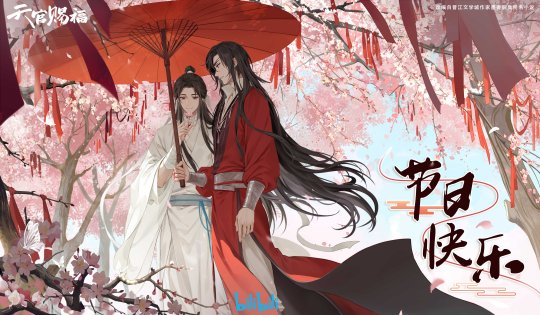
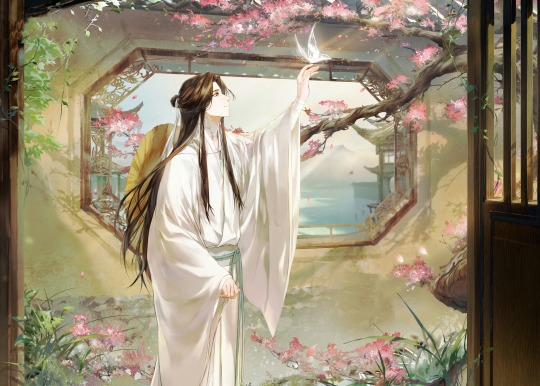
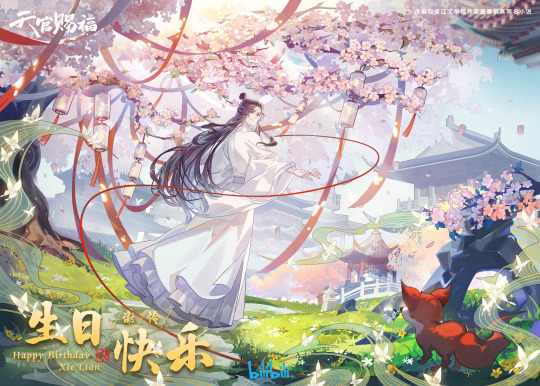
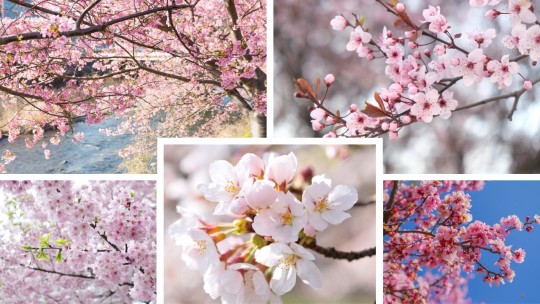
The cherry blossom (Prunus serrulata) is also known as the Japanese cherry and is the unofficial national flower of Japan. Its Japanese name Sakura (桜) has been derived from the word “saku” which means “to bloom”. Its meanings in hanakotoba are “beauty of spirit”, grace, chastity, excellent beauty, gentleness, good education and the “transience of life”. In Japan, cherry blossoms are also a symbol of the “beauty of impermanence”—a Shinto concept better known as “mono no aware” (物の哀れ) as their falling petals are a reminder that although life is short, it is beautiful and should be savoured. The Japanese concept of “natsukashii” (懐かしい) likewise emphasizes the fleeting nature of cherry blossoms. This concept refers to the happy-yet-wistful nostalgia for times and things that we will never be able to go back to. We will never get to experience those moments again, just like the ephemeral cherry blossoms, which makes them even more significant. Cherry blossoms bloom from March to April which is the start of the new fiscal year in Japan. As a result of this cherry blossoms have also come to symbolise new beginnings and springtime. Given that feudal Japanese soldiers associated cherry blossoms with honour, discipline, and dignity—falling flowers were thought to be symbolic of a Samurai's death. In Western floriography, cherry blossoms herald the changing of the seasons and symbolise renewal and rebirth. They also symbolise the fleeting nature of life, tenderness, forgiveness, strength, beauty, love, confidence, peace, friendship and gratitude.
In China, most of the Cherry blossom’s Japanese symbolic meanings are more strongly associated with plum blossoms. Cherry blossoms are known as yīnghuā (樱花) in Chinese and symbolise life, beauty, femininity, power and mysteriousness in Chinese culture. While still occasionally connected to the concepts of life and death, Cherry blossoms are more connected to the concepts of love and romance as well as beauty and femininity in Chinese culture.
Cherry blossoms are primarily associated with the transiency of life. In Xianxia novels like Tiān Guān Cì Fú, where characters can achieve immortality through cultivation, themes such as the transiency of life are not majorly relevant. However, in Tiān Guān Cì Fú, gods are powered by the faith and worship of their followers and without this faith they would fade into non-existence. These Heavenly Officials are not all-powerful but are beholden to fate like all other living things and are capable of death. It was also stated by MXTX, that Heavenly Officials banished or not, are not included in the wheel of reincarnation after death. This reaffirms that while long-lived, “when humans ascend, they are still human; when they fall, they are still human” (MXTX, p. 541). Xie Lian’s first 2 ascensions and subsequent banishments are also reminiscent of the fleeting nature of life—“He ascended to the heavens quickly, but his fall from grace was even faster” (MXTX, p. 10). At one moment he was “the crown prince who pleased the gods”, at the pinnacle of prominence and the next he was “the laughingstock of the three realms”. This ties in with the cherry blossom’s representation of the fleeting nature of life. Xie Lian’s words to Hua Cheng in chapter 31—“Those who have known each other for decades can become strangers in a day. We've met by chance, and we may part by chance. If we like each other then we shall continue to meet; if we don't, then we shall part. At the end of the day, there's no banquet in the world that doesn't come to an end, so let's go all more with the flow, and I'll say what I want to say” (MXTX, p. 267)—are also reminiscent of the fleeting nature of life.
The Cherry Blossom’s association with the “happy-yet-wistful nostalgia for times and things that we will never be able to go back to” is reminiscent of Xie Lian’s halcyon days before his first ascension as well as the friendship of the Xianle Trio before the fall of Xianle. Additionally, the cherry blossom also symbolizes strength, dignity, “beauty of spirit”, peace, forgiveness gratitude, friendship and tenderness which are all qualities that can be associated with Xie Lian.
-> 2) Peony
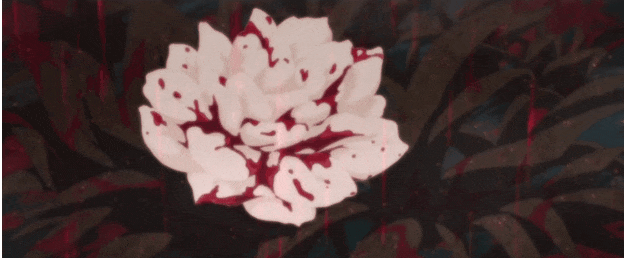


“At the corner of the jade altar table sat a tiny, lonesome flower. A far-gone memory surfaced in Xie Lian’s mind, and he was momentarily stunned. It was like a dust-covered picture, but when he tried to wipe it clean, it remained blurry. Unspeaking, he frowned and loosened his grasp to pick up that flower. Hua Cheng put down his brush as well and slowly began to grind some ink. “What’s wrong?” Xie Lian smiled. “Nothing. Just…this flower’s scent is refreshing. I’ve always liked this sort.” Offerings of flowers in temples and palaces were far from rare. However, most devotees offered large, fresh bouquets of bright red or purple blossoms, or handcrafted imitation flowers that never wilted. After a pause, Xie Lian said, “Could this be the flower which Crimson Rain sought?” Hua Cheng smiled. “Gege has such godly premonitions.” (MXTX, pp. 765-766) Despite the flower Hua Cheng shielded from the blood rain after raiding Qi Rong's hideout—“…a shower of blood rain poured down from the skies. He saw a flower was getting battered by the bloody rain, so he tilted his umbrella and shielded it” (MXTX, p. 120)—earning him the alias "crimson rain sought flower”, it is never named in the novel. It is however confirmed to be the same kind of flower he always places as an offering on the altar of Xie Lian's temple. In the donghua however, it is portrayed as a white peony (Paeonia). Peonies are known as mǔdān (牡丹) in China and were regarded as China’s national flower during the Tang Dynasty (618 to 907 A.D.). In accordance with this, they symbolise prosperity, honour, wealth and beauty, love and happiness. The Chinese term for peonies means "the most beautiful” while other Chinese names for peonies are "fùguìhuā" and "huawang," which translate to "king of the flowers" and "flower of riches and honour," respectively. In Japan, peonies are called botan (牡丹) and symbolize shyness, wealth and regalness in hanakotoba. The flower's profound appearance, notably its multitudes of large petals that are thin and silk-like, is considered to be where the peony symbolising wealth and regalness originated. In Western floriography, peonies represent bashfulness and compassion. It is speculated that the reason Hua Cheng shielded the white flower to prevent it from being stained by the blood rain is because he associated the flower with Xie Lian.
-> 3) Wild Rose
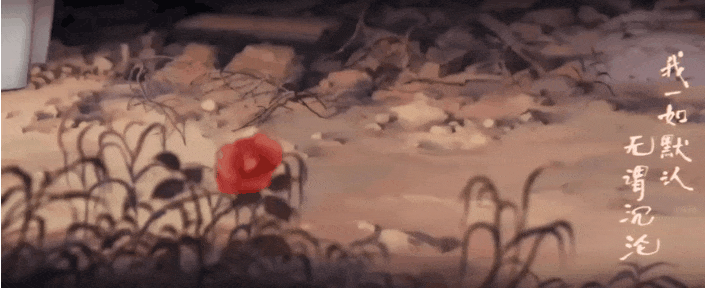


The flower featured in the above panel is likely a red rose. In China, roses are known as méigui (玫瑰), and in accordance with their universal symbolism, they are strongly associated with romance, passion and love. Thanks to the Chinese monthly rose (Rosa chinensis), which blooms in almost every month of the year, creating a "spring" that never ends, roses are also associated with longevity and the perpetual spring in China. Considering that the colour red is auspicious, red roses are also thought to bring good fortune in China. In Japan, roses are called bara (薔薇) and its meaning in hanakotoba is love and beauty. Red roses in particular symbolize affection and passionate love; while rose thorns represent “happiness in misfortune”. In Western floriography, roses symbolize love, passion, beauty, romance and secrecy. Red roses symbolize enduring passion, desire, affection and romance. A single rose is said to symbolize love at first sight. The rose flower’s symbolic meanings of enduring passion, romance, “love at first sight” and secrecy tie in well with Hua Cheng and his motivations—“My beloved is a brave, noble, and gracious special someone. He’s saved my life; I’ve looked up to him ever since I was young. But, I wanted to catch up to him more, and become an even stronger person for him. Although he might not remember me well. We never really talked. I want to protect him” (MXTX, p. 1953). The wild rose flower depicted in the opening is seen wilting as Xie Lian walks by leaving only thorns. This could be a depiction of how Xie Lian’s naïve, fragile passion from his youth has long since wilted leaving behind someone wiser who is able to find happiness in misfortune and life’s simplicities. The scene could also possibly be an allusion to how in the novel’s original character concepts Xie Lian was supposed to become a flower god in charge of flowers blooming and wilting after being banished.
◣━━━━━━━━━◢✿◣━━━━━━━━━◢
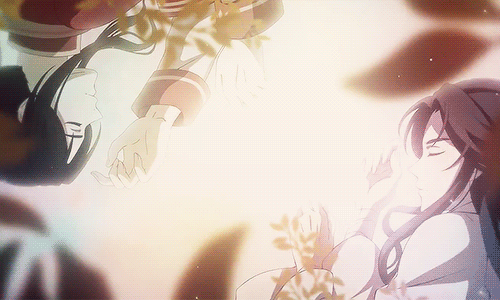
╰┈➤ Part 2 𐀔
╰┈➤ Anime Hanakotoba Posts Directory
[I had to split this post in half due to Tumblr's image/gif limit so please find part 2 on my blog. Also, I wanted to post this on the release date for S2 of the donghua but felt like the post wasn't ready yet so decided to postpone it till this week. If you liked this post, check out my other hanakotoba analysis posts... Also, if I've gotten any of the kanji, romaji, hanzi or pinyin incorrect, feel free to correct me]
#tgcf#tian guan ci fu#mxtx#mxtx tgcf#mo xiang tong xiu#donghua#danmei#anime#anime hanakotoba#hanakotoba#floriography#hanakotoba analysis#tgcf donghua#tgcf season 2#tgcf s1#tgcf s2#heaven official's blessing#hualian#hua cheng#xie lian#san lang#sanlian#hua cheng x xie lian#hua cheng/xie lian#huaxie
72 notes
·
View notes
Text
⛓ Viole's Voice Claims! 🦂
The voice claim video in this post is also added to the info post for Viole Santori (Des). The voice claims are credited in the info post by voice actor names only, the details for the choices made and portrayals used for the video are only in this post.
This video was edited by me but the artwork is commissioned from Serenity @leonakingscholarship (thank you again, ily!).
This took an embarrassing amount of time to make ngl-
(Yapping about the voice choices + naming the VAs w/ links below)
Their Japanese voice claim is Miyuki Sawashiro playing Masami Iwasawa from Angel Beats! (one of my favorite anime of all time and a very sad series). This is why their singing voice claim is Iwasawa's singing voice from the anime (the singer, Marina). Note that links for characters may contain spoilers for the media they come from.
Iwasawa is one of my favorite characters of all time. I love both of her voice actresses dearly for this performance, but I think that this is only a part of why I associate this voice with Viole. Iwasawa has a mature-sounding voice that is somewhat removed from what she says (we later learn that this may be due to her trauma). Her somewhat pained line that turned into relief (the line from the video) is how I imagine a Viole who has realized they are allowed to feel their feelings outright without holding back might sound.
Their English voice claim is Brina Palencia, a voice acting legend best known for playing Ciel Phantomhive from Kuroshitsuji (Black Butler). Ciel is the character being portrayed in the clip that I have selected for this video. This quote comes specifically from one of the OVAs in which Ciel was performing Hamlet for whatever in-lore reason.
Ciel sounds a bit rougher/deeper than Viole would, but the general vibe of this performance and accent are very close to what I imagine. Viole has an old-school way of speaking that I associate with a British accent. I personally hear all the Diasomnia boys with this accent.
As mentioned, the line used in the video is from the OVA where the Kuro characters are performing Hamlet (dubbed). I chose this line because the old language fits Viole and because, similarly to Iwasawa, Ciel speaks with distance from his meaning and true emotions. This is how Viole carries themselves. Viole, in addition to having an accent, speaks flatly like Ciel does about half of the time and tends to have a general seriousness to their tone.
They do not express emotion often even if they can force the mannerisms of a "proper lady" into their speech when called for, Viole's style of speech is also simply how they are. They have been like this since childhood and are some manner of neurodivergent.
Even with those they are close to, like Yuuri Kawara (Yuu) and Deuce Spade (ship), they still lack the same emotive tones that most people would use. A vocal performance of Viole would need to convey a lot of emotion with a limited tonal range.
In the end, I think that I would still picture Brina's voice for it as I have heard her playing more feminine characters like Fairy Tail's Juvia Lockser. Viole's ideal voice would be similar in pitch to Juvia with Ciel's flat affect and British accent. The Brit in them is strong.
If you have seen a performance by Brina Palencia that fits this description better, please do let me know (thank you!). I'd be interested and I like hearing other voice roles for people, too!
Thank you if you read this far!! I appreciate the time spent :)
Viole Santori (c) @kiyomizuki Twisted Wonderland (c) Disney Japan Template from @unfinished-projects-galore (post) Do not repost or use this art or edited video without my permission. Copying and/or stealing content is not nice behavior. Please link or reblog if you wish to share this post with others! Thank you for your support.
#twst#twisted wonderland#disney twst#twst oc#viole santori#original character#disney twisted wonderland#my oc#twst wonderland#ツイステッドワンダーランド#oc#oc lore#oc blog#commissioned art#twst aniprep au#kiyo mizuki ocs#oc voice claim#oc info#oc stuff#twst original character
11 notes
·
View notes
Photo

🌌✨ Hey there, wallpaper lovers! Today, we're thrilled to share one of our latest creations: Mystical Guardian! This stunning anime illustration captures the essence of tranquility and mystery, showcasing a guardian standing over a beautiful Japanese garden at dusk. 🌸🌙
The serene colors and intricate details invite you to step into a world where magic and nature intertwine. The mysterious figure in the background adds an intriguing twist, making you wonder about the stories hidden within this enchanting scene. 🥷💫
Whether you're a fan of anime or just love beautiful art, this wallpaper is perfect for your devices. It's not just a wallpaper; it's a window into a serene moment that can brighten your day!
So, if you’re ready to bring some magic to your screens, make sure to Download Mystical Guardian and let this captivating artwork inspire you every day! 🌟
Happy decorating!
Stay tuned for more amazing wallpapers from us!
#anime#wallpaper#digitalart#illustration#guardian#Japanese garden#dusk#serene#mystical#fantasy#nature#art#mystery#animeart#wallpapers#beautiful#scenery#landscape#characterdesign#artwork
8 notes
·
View notes
Text

Floating among the mist and clouds, Mount Fuji emerges in soft, ethereal tones—a vision of Japan’s most iconic peak, captured with a delicate interplay of color and light. This breathtaking artwork is a prime example of wireless cloisonné (無線七宝), crafted by the celebrated artisan Namikawa Sōsuke (1847–1910).
Namikawa Sōsuke, one of the most renowned cloisonné masters of the Meiji era, revolutionized traditional techniques by inventing the wireless cloisonné method in the 1870s. Unlike conventional cloisonné, which relies on fine metal wires to separate enamel colors, the wireless method involves removing these wires before firing. The result is a seamless, painterly surface that closely resembles a watercolor painting, marked by its delicate gradients and subtle shading.
This framed plaque, depicting summer Mount Fuji, is considered Namikawa’s signature piece and a masterpiece of wireless cloisonné. It was exhibited at the 1893 World’s Columbian Exposition in Chicago, where it garnered significant acclaim—not in the Fine Art (工芸) section, but rather as a Painting, highlighting its artistic and pictorial qualities rather than its craft origins. In 2011, it was designated as an Important Cultural Property, reflecting its enduring legacy.
The composition captures the serenity of Mount Fuji, its snow-capped peak appearing through a break in the rolling clouds. The right side of the plaque features the mountain summit, peeking through the clouds with traces of snow, while the foreground is filled with billowing white clouds. The entire scene follows a diagonal composition, stretching from the upper right to the lower left, creating a sense of movement and depth.
The background, rendered in a soft blend of pale purple and gray, enhances the cool, tranquil atmosphere. Fuji’s slopes, painted in varying shades of blue, contrast with the wispy white and gray clouds, each hue meticulously graded using layered enamels. This subtle modulation is only possible with the wireless cloisonné technique, showcasing Sōsuke’s mastery in achieving naturalistic effects.
As one of the few cloisonné works presented as a painting, this piece highlights how Japanese artisans in the Meiji period embraced cross-disciplinary approaches, blending craft and fine art to meet both domestic and international expectations. Namikawa’s work not only demonstrated technical innovation but also embodied the spirit of artistic evolution during a transformative period in Japanese history.
#ceramic#ceramics#handmade ceramics#decor#coffee#tea#home#japan#japanese pottery#japanese culture#japanese history#japanese art#japanese print#art and crafts#crafts#nippon#japanese#kyoto#tokyo#zen#zen art
3 notes
·
View notes
Text




This peaceful set of images comes from Taisanji Temple in Matsuyama, Ehime Prefecture. Matsuyama is a charming city located on Shikoku Island, known for historic temples, ancient castles, and soothing hot springs. Today’s visuals showcase intricate Buddhist artwork from temple number 52 on the famed Shikoku Pilgrimage.
The photographs feature detailed scenes from Buddhist cosmology painted on wooden panels. One depicts serene Buddhas and compassionate Bodhisattvas, bathed in soft, tranquil colors. Another painting vividly portrays scenes of the afterlife, where souls undergo judgment, reinforcing Buddhist teachings on morality and karma. The dramatic imagery brings complex spiritual concepts to life, beautifully merging art with religious philosophy.
At the heart of Taisanji is Juichimen Kannon, an eleven-faced form of Kannon known for compassion and mercy. Images of Juichimen Kannon remind visitors of the gentle, guiding compassion central to Buddhism. These artworks offer a calming reflection on spirituality and Japanese cultural heritage.
If these scenes resonate with you, explore more peaceful temple imagery and aerial views at my Linktree: https://linktr.ee/shikoku4k. I'd love to hear from you, so feel free to reach out through the Linktree form!
#TaisanjiTemple#Matsuyama#Ehime#ShikokuPilgrimage#Buddhism#JapaneseTempleArt#JuichimenKannon#BuddhistPaintings#JapaneseCulture#TemplePhotography#BuddhistArt#TraditionalJapan#JapaneseHistory#Spirituality#ZenAesthetic#TravelJapan#CulturalHeritage#photography#youtube#culture
3 notes
·
View notes
Text




This peaceful set of images comes from Taisanji Temple in Matsuyama, Ehime Prefecture. Matsuyama is a charming city located on Shikoku Island, known for historic temples, ancient castles, and soothing hot springs. Today’s visuals showcase intricate Buddhist artwork from temple number 52 on the famed Shikoku Pilgrimage.
The photographs feature detailed scenes from Buddhist cosmology painted on wooden panels. One depicts serene Buddhas and compassionate Bodhisattvas, bathed in soft, tranquil colors. Another painting vividly portrays scenes of the afterlife, where souls undergo judgment, reinforcing Buddhist teachings on morality and karma. The dramatic imagery brings complex spiritual concepts to life, beautifully merging art with religious philosophy.
At the heart of Taisanji is Juichimen Kannon, an eleven-faced form of Kannon known for compassion and mercy. Images of Juichimen Kannon remind visitors of the gentle, guiding compassion central to Buddhism. These artworks offer a calming reflection on spirituality and Japanese cultural heritage.
If these scenes resonate with you, explore more peaceful temple imagery and aerial views at my Linktree: https://linktr.ee/shikoku4k. I'd love to hear from you, so feel free to reach out through the Linktree form!
#TaisanjiTemple#Matsuyama#Ehime#ShikokuPilgrimage#Buddhism#JapaneseTempleArt#JuichimenKannon#BuddhistPaintings#JapaneseCulture#TemplePhotography#BuddhistArt#TraditionalJapan#JapaneseHistory#Spirituality#ZenAesthetic#TravelJapan#CulturalHeritage#japan destinations#japan#photography#japan photos
2 notes
·
View notes
Text




This peaceful set of images comes from Taisanji Temple in Matsuyama, Ehime Prefecture. Matsuyama is a charming city located on Shikoku Island, known for historic temples, ancient castles, and soothing hot springs. Today’s visuals showcase intricate Buddhist artwork from temple number 52 on the famed Shikoku Pilgrimage.
The photographs feature detailed scenes from Buddhist cosmology painted on wooden panels. One depicts serene Buddhas and compassionate Bodhisattvas, bathed in soft, tranquil colors. Another painting vividly portrays scenes of the afterlife, where souls undergo judgment, reinforcing Buddhist teachings on morality and karma. The dramatic imagery brings complex spiritual concepts to life, beautifully merging art with religious philosophy.
At the heart of Taisanji is Juichimen Kannon, an eleven-faced form of Kannon known for compassion and mercy. Images of Juichimen Kannon remind visitors of the gentle, guiding compassion central to Buddhism. These artworks offer a calming reflection on spirituality and Japanese cultural heritage.
If these scenes resonate with you, explore more peaceful temple imagery and aerial views at my Linktree: https://linktr.ee/shikoku4k. I'd love to hear from you, so feel free to reach out through the Linktree form!
#TaisanjiTemple#Matsuyama#Ehime#ShikokuPilgrimage#Buddhism#JapaneseTempleArt#JuichimenKannon#BuddhistPaintings#JapaneseCulture#TemplePhotography#BuddhistArt#TraditionalJapan#JapaneseHistory#Spirituality#ZenAesthetic#TravelJapan#CulturalHeritage#japan#photography#shikoku#youtube#dronephotography
2 notes
·
View notes